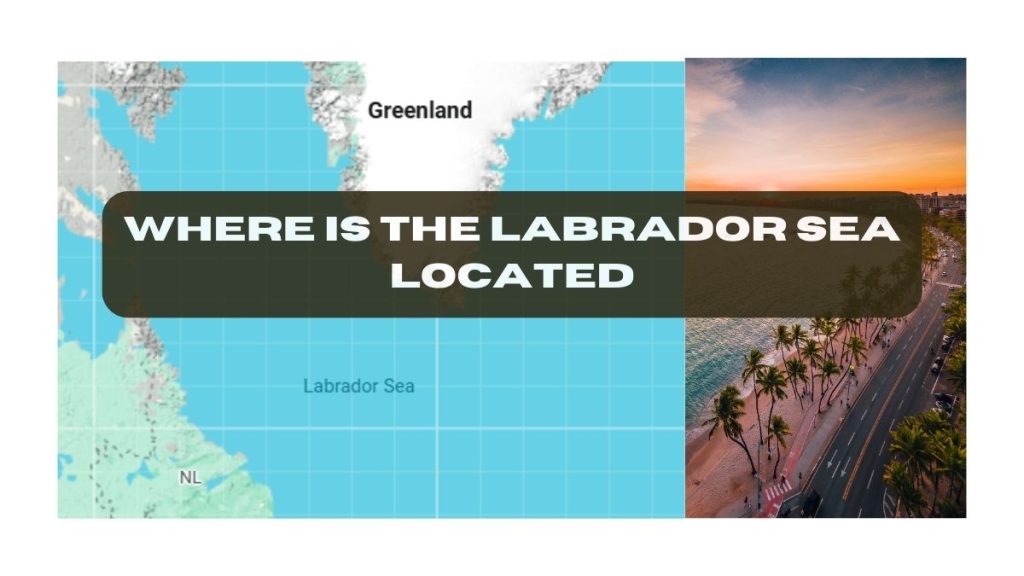The Labrador Sea is a body of water in the North Atlantic Ocean, nestled between Labrador (Canada) and Greenland (an autonomous territory of Denmark). It connects to Baffin Bay via the Davis Strait and is known for its icy waters, powerful currents, and crucial role in global ocean circulation.
Many people ask: Is the Labrador Sea part of the Arctic Ocean? Which countries border it? Why does it matter? (It drives climate patterns and supports marine ecosystems.) Let us find out answers of these questions:

Exact Coordinates & Boundaries of the Labrador Sea
The Labrador Sea spans:
- Latitude: 50°N to 65°N
- Longitude: 45°W to 65°W
Bordered by:
- West: Labrador Peninsula (Canada)
- East: Greenland
- North: Davis Strait (leads to Baffin Bay)
- South: Open Atlantic Ocean
A key distinction is that while it is near the Arctic, it is not part of the Arctic Ocean—it is a subarctic Atlantic region.
Is the Labrador Sea in the Arctic or Atlantic Ocean?
Common Misconception: Many assume it is Arctic due to its cold climate.
Fact: It is officially part of the North Atlantic Ocean, though it borders Arctic-influenced regions like Baffin Bay. The Labrador Current carries cold Arctic water southward, reinforcing this confusion.
Countries & Territories Near the Labrador Sea
Two main regions border the sea:
- Canada (Labrador): Part of Newfoundland and Labrador province.
- Greenland: An autonomous Danish territory.
Did You Know? Greenland governs itself but relies on Denmark for defense and foreign affairs.
Key Features: Depth, Currents & Climate Impact
Depth & Oceanography
- Average Depth: ~3,300 ft (1,000 m)
- Deepest Point: Labrador Basin (~4,300 ft / 1,300 m)
The Mighty Labrador Current
- Flows southward, carrying cold Arctic water.
- Impacts New England’s climate (helps create fog in places like Boston).
Role in Global Climate
- Part of the Atlantic Meridional Overturning Circulation (AMOC), which regulates Earth’s climate.
- Cold, dense water sinks here, driving ocean currents worldwide.
Common Misconceptions About the Labrador Sea
Myth: It is part of Hudson Bay.
Fact: They are separate—Hudson Bay is further west, fully within Canada.
Myth: It belongs to the Arctic Ocean.
Fact: It is in the North Atlantic, though influenced by Arctic waters.
Why the Labrador Sea’s Location Matters
- Ecologically: Rich fishing grounds (cod, shrimp, seals).
- Scientifically: Critical for climate research (melting ice, shifting currents).
- Economically: Offshore oil and gas exploration potential.





























